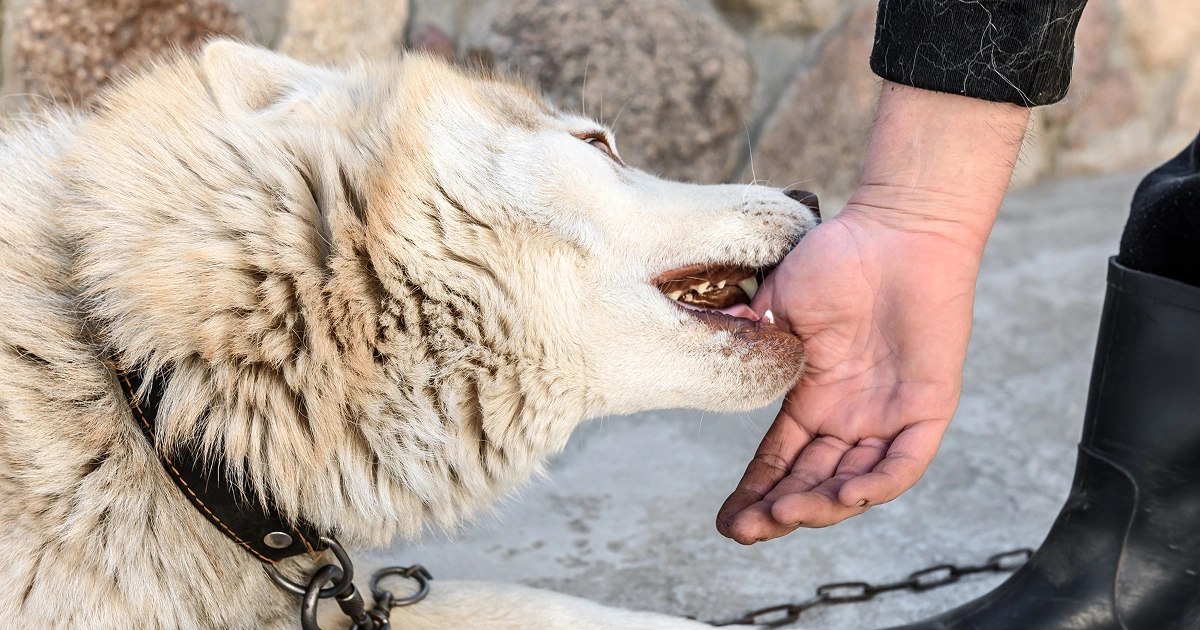
Rabies is a virus that dogs often contract after being bitten by or coming into contact with bodily fluids from an infected animal. Wildlife such as raccoons, skunks, bats, coyotes, squirrels, and foxes are common carriers of the virus. Unfortunately, rabies is almost always fatal in dogs, but the risk of contracting this disease can be significantly reduced with regular rabies vaccinations.
How Do Dogs Contract Rabies?
Most cases occur when the dog is bitten by a rabid animal. When outdoors, pay attention to creatures that are acting out of the ordinary. For instance, a raccoon that is active during the daytime, or a fox that seems unusually aggressive and confrontational to humans and other animals. It is a good idea to keep your dog on a leash, so you have more control to get them out of harm’s way.
Less frequently, the virus is contracted through infected blood or saliva that enters your dog’s system through the eyes, nose, mouth, or an open wound. Steer clear of injured or deceased animals you may come across outside.
What Are the Symptoms of Rabies?
There are two common forms of rabies: furious and paralytic. They can occur together.
- Furious Rabies: Your dog may suddenly become aggressive and attack without provocation or appear to be hallucinating and responding strangely to their surroundings.
- Paralytic Rabies: As the virus spreads through your dog’s nervous system and reaches their brain, different muscles and organs become paralyzed and slowly shut down.
Early symptoms of a rabies infection, such as fever, loss of appetite, excessive salivation, muscle weakness, and seizures, may initially be confused for other conditions if you are unaware your dog has been exposed to rabies.
How is Rabies Treated?
There is currently no effective treatment for rabies. Dogs can receive a rabies vaccine booster immediately after potential exposure which may reduce their risk of contracting the virus, but once they are infected and begin to show symptoms, there is no way to cure the disease. Your veterinarian can humanely euthanize them once they strongly believe a rabies infection is present. The only way to accurately confirm the disease is through a post-mortem tissue sample of the brain.
How to Prevent Rabies
Once of the best prevention methods is getting your dog vaccinated. They can receive their initial vaccination at age 14 weeks, followed by a booster a year later. Your dog should then receive boosters every one or three years after that depending on the specific vaccine. While no vaccine is 100% effective, it significantly reduces your dog’s risk if they stay current with boosters.
You can also help minimize exposure by paying attention to your surroundings when outdoors and avoiding interactions with animals that may be infected. If your dog is bitten, seek immediate medical care.
At Lake Wylie Pet Resort, we keep dogs in a safe, enclosed play yard when outside to prevent contact with wildlife. In addition, all dogs are required to be up to date on their rabies vaccination prior to boarding for their safety and that of other animals and humans. Have peace of mind that your dog is safe and in good hands while you’re away by reserving their spot at Lake Wylie Pet Resort today!




